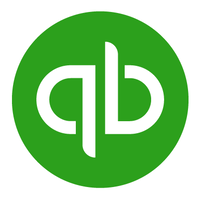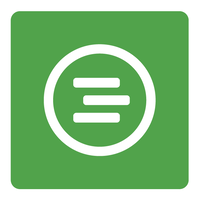What is scheduling software?
Scheduling software improves your overall business efficiency by tracking calendars and shifts in real time and sending automated reminders to keep you from missing meetings. You can build out a schedule with few clicks and optimize it with automations and settings, and it’ll cut down on accidental double-booking.
A company is only as good as the schedule it keeps — missing shifts, meetings with customers, or important deliveries can all set a business up for failure. While you can track your schedule on a paper planner or Excel spreadsheet, it’s an outdated method that can’t keep up as well with the demands of your modern business.
This buyer’s guide contains comparisons of the best scheduling software for 2022, common features, benefits, and what you should look for when purchasing scheduling software.
Find your new scheduling software
Compare the best scheduling software of 2022
What are the main functions of scheduling software?
Not all businesses will use their scheduling software in the same way, but these are some ideas of what you can do with it.
Employee shift scheduling
If you have hourly employees or inconsistent shift schedules, scheduling software is a must for your company. Using these tools, you can automatically create schedules based on employee availability and how many workers you’ll need, reducing the time your managers have to spend poring over their calendar. Additionally, employees will be able to see the schedule ahead of time to make any necessary adjustments and ensure they’re present. Many of the tools also allow employees to swap shifts with admin approval.
Retail stores, restaurants, and manufacturers are just a few examples of businesses that can benefit from scheduling software for their employee shifts.
Scheduling client meetings
How frustrating is it to go back and forth with clients trying to match up your calendars and find a meeting time that works for both of you? With appointment scheduling software, you can integrate the platform with your calendar and provide your clients with a customer-facing view, allowing them to see what time you have available and schedule meetings when you’re both free. This eliminates the back and forth and provides better service for your customers.
Salespeople, fitness instructors, and healthcare providers in particular can benefit from appointment scheduling software in this way.
Managing delivery schedules
Supply chains are fragile, and delivery schedules have to be carefully managed to keep things running smoothly. Scheduling software can provide visibility into your delivery schedule and assign slots to incoming and outgoing shipments automatically based on driver availability. This keeps your team from having to load and unload trucks at the same time, which can be confusing and result in inventory mistakes.
Supply chain companies, manufacturers, and retailers find scheduling tools that manage their delivery schedules especially helpful.
What are the common features of scheduling tools?
While not all scheduling tools will offer the same options, most of the top software companies provide these features.
Shift scheduling
Most scheduling software provides an internal calendar that makes it easy to assign shifts to employees. Your team can input their own availability, and the software will combine that information with data from your sales records (assuming you integrate your scheduling and
business intelligence software). This allows it to determine how many employees are needed for each shift and automatically generate a schedule. With scheduling software, you can reduce the strain on managers and give employees more control over their own schedules, improving morale and productivity.
Automated reminders
Making your schedule is one thing, but keeping up with it can be even more difficult. Scheduling tools offer automated meeting reminders to keep your day on track and ensure you’re everywhere you need to be. Scheduling software also sends alerts to the people you’re meeting with, so they can respond to the invitation. As an added benefit, you don’t waste time going to a meeting only to be the only one who shows up. You can set your reminders to go off a specific amount of time before the event or at specific intervals earlier in the day to remind you to prepare.
These reminders can also be sent out before scheduled shifts for hourly workers. This helps remind employees when they’re supposed to be in and ensures you have the staff you need on hand.
Calendar management
Scheduling software allows you to more easily manage your calendar. It gives clients and employees the option to schedule meetings with you during your available time, without you needing to approve the request. You can also block out time for work, so other people can only schedule appointments with you when you’re truly available. If you’re most productive in the morning, you might choose to block out time from 8 a.m. to 12 p.m. and leave your afternoon open for meetings.
Using scheduling software, you can also manage your team members’ calendars to add time for special projects or tasks you need their help with.
Scheduling software considerations for different businesses
Businesses with shift workers
If your business has hourly workers or inconsistent shift schedules, you need scheduling software with employee self-service portals that allow your employees to input their own availability. You also need to ensure that the schedules can be accessed remotely, so employees can double-check when they’re supposed to come in. Being short-staffed can have harmful effects on your business, so providing your employees more control over and visibility into their schedule can help make sure they’re present when you need them.
Your scheduling software should also integrate with your
payroll system, so you can easily import the hours your employees worked and automatically pay them accordingly. This will reduce payroll errors and lower the time you spend processing payroll.
You’ll also want to look for scheduling tools that integrate with your business intelligence software. This will allow your scheduling system to determine how many employees you’ll need during each shift based on sales records from similar periods and generate the schedule accordingly.
Sales teams
The members of your sales team spend most of their time meeting or at least communicating with clients. Appointment scheduling allows your clients to schedule meetings when it’s convenient for them, increasing the likelihood that you’ll actually get meetings with key decision-makers. This also reduces the amount of time your salespeople spend trying to coordinate appointments and increases the number of meetings they can feasibly have.
You should look for scheduling software that integrates with your email system. This will allow you to add scheduling buttons to your email signature, so clients and prospects can schedule meetings right from your emails. This improves the perception of accessibility your customers have of your team, improving their attitude towards your company.
If your sales team doesn’t find their own prospects, you’ll also want to use scheduling software that connects with each of their calendars. This will allow your sales manager to easily assign them new leads based on their availability.
Supply chain managers
Supply chain managers need to keep their shipments and deliveries running smoothly to ensure they have both the space and inventory they need. If you know when your deliveries are coming in, you can make sure you have enough space to house the new inventory. Additionally, you can schedule shipments to clear out some space before those deliveries come in.
You should also look for a scheduling tool that offers automated scheduling. You can integrate your scheduling tool with your
supply chain management software, allowing your scheduler to automatically assign shipment times to ensure they’ll meet delivery deadlines. You also have the ability to block out times if there are sections of the day where no one will be on the floor.
Scheduling software for supply chains should also include real-time scheduling. This means your calendar needs to be completely up to date for full visibility into your scheduled operations. Any delays in calendar updates could lead to you double-booking your loading dock, which could cause major delays and mix-ups.
What’s the best scheduling software for your business?
Choosing the best scheduling software for your business depends on the type of scheduling you’re going to use it for most. If you need to schedule employee shifts, you don’t want to choose software geared towards appointment scheduling. If you’re dealing with supply chain management, you need to choose a tool with automated scheduling features. No matter how you plan to use scheduling software, you’ll also want to make sure it integrates with other tools that you use, like
business intelligence software,
CRM software, or
supply chain management software.
 Acuity
Acuity Calendly
Calendly Doodle
Doodle Deputy
Deputy Float
Float QuickBooks Time
QuickBooks Time Schedulicity
Schedulicity When I Work
When I Work


